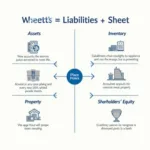Are you preparing for the TOEIC and wondering how to avoid common TOEIC mistakes? Don’t worry, you’re not alone! Many examinees frequently fall into similar traps during the test. Understanding these common errors can help you steer clear of them and improve your score remarkably.
In this guide, we’ll explore the most common mistakes made during the TOEIC exam and how you can fix them like a pro. By the end, you’ll know effective strategies that will set you apart.
Common TOEIC Listening Mistakes
1. Not Paying Attention to the Context
One of the most common mistakes is failing to grasp context clues during the listening section. Many students try to rely solely on hearing individual words or phrases, but the meaning can be completely lost if you miss the overall context of the conversation or lecture.
How to avoid:
- Focus on the whole situation rather than just isolated words.
- Train yourself to listen for the main idea while practicing TOEIC listening tasks.
- Practice identifying the purpose of conversations to infer meaning from context.
Improve your listening comprehension by checking out our quick TOEIC tips from scratch for beginners.
2. Misunderstanding Fast Speech
Since TOEIC recordings often include natural-speed conversations, many learners struggle to keep up. Misunderstanding connected speech or idiomatic phrases can lead to incorrect answers.
How to avoid:
- Practice listening to fast-spoken dialogues and focus on linking sounds.
- Improve your ability to understand phrases as a whole, instead of isolating speech.
- Use real-world materials like podcasts or YouTube videos to adjust to fluent speakers.
Common TOEIC Reading Mistakes
3. Skimming Too Quickly
Another frequent mistake is reading passages too fast, especially during the second part of the reading section, where examinees are under time pressure. Skimming may result in missing critical details.
How to avoid:
- Develop efficient skimming techniques by practicing to grasp the main ideas quickly but accurately.
- Rather than focusing on speed, emphasize accuracy in your reading process.
- Use additional time when available to review questions and confirm your answers.
Explore methods to excel in TOEIC like a pro if you’re looking for more advanced strategies on how to read effectively while managing time pressure.
4. Vocabulary Over-reliance
Many students fall into the trap of relying heavily on vocabulary memorization alone. TOEIC is not just about knowing individual words but also using them in the correct context, which requires comprehension skills.
How to avoid:
- Build strong comprehension skills by practicing vocabulary in the context of sentences and paragraphs.
- Leverage online resources to enhance contextual understanding.
- Focus on recognizing synonyms and paraphrasing techniques used in TOEIC reading questions.
Common Grammar and Vocabulary Mistakes
5. Confusing Similar Words
Mistaking frequently confused English words is another trap TOEIC test-takers face. For instance, commonly confused pairs like “affect” vs. “effect”, or “accept” vs. “except” can easily cause errors when answering certain types of questions.
How to avoid:
- Create a list of confusing word pairs and sentences to practice daily.
- Familiarize yourself with these confusing words and their common usages.
- Use TOEIC preparation materials that emphasize vocabulary exercises featuring these tricky pairs.
6. Misinterpreting Tenses and Conditionals
Grammar-focused questions often test your understanding of tenses and conditional structures. Learners frequently misinterpret which tense or conditional form applies in a given context, leading to incorrect answers.
How to avoid:
- Learn to identify time markers in sentences that indicate specific tenses (e.g., “by 2023,” “since”).
- Practice differentiating between the zero, first, second, and third conditionals through examples and exercises.
- Utilize grammar drills in your TOEIC prep materials to gain confidence in recognizing sentence patterns involving tenses.
Common Speaking Mistakes
7. Rushing Through Responses
For the speaking part (if you’re taking TOEIC Speaking), many candidates rush through sentences, leading to unclear pronunciation or incomplete ideas. Speaking too quickly can also result in hesitation and filler words like “uh” or “um.”
How to avoid:
- Practice pacing yourself. Use a stopwatch to practice speaking clearly and at a steady rate.
- Don’t focus solely on fluency—clarity and coherence are just as important.
- Incorporate pauses to control your speed, reflect on your thoughts, and prevent filler words.
For a stress-free approach to handling TOEIC Speaking, check out our how to ace TOEIC test without stress guide.
Common Writing Mistakes
8. Inadequate Structure in Writing Tasks
Even experienced learners often overlook the importance of having a clear beginning, middle, and end in their written response. Without organization, it becomes difficult to logically present ideas, which can reduce the score for coherence and cohesion.
How to avoid:
- Always plan your writing before starting. Brainstorm ideas and outline your answer.
- Stick to basic writing structures: Introduction, Body, and Conclusion.
- Practice crafting essays under timed conditions to improve both speed and coherence.
For learners who practice TOEIC at home, the best strategies for TOEIC at home provides additional advice on improving writing structure and timing.
Expert Insights: Practice Makes Perfect
According to Mr. Thanh Tùng, a TOEIC instructor with over 10 years of experience, “Students need to practice consistently while paying attention to their language weaknesses. Adapt your study methods to target the areas where you’re more prone to mistakes.“
He further adds, “Mastering TOEIC means being both knowledgeable and strategic. Efficient test-takers are those who can anticipate common mistakes and refine their approach.“
Conclusion
Avoiding these common TOEIC mistakes is key to improving your score. Whether it’s listening carefully for the main idea, practicing grammar, or improving your reading speed, there’s always room to grow. Apply the tips we covered in this article to each section, and you’ll be well on your way to success.
Finally, remember to remain calm and composed during the test. With the right strategies, you can approach the TOEIC with confidence and achieve the score you desire.
Frequently Asked Questions (FAQ)
1. What is the best way to practice TOEIC listening skills?
The best way to improve your TOEIC listening skills is by practicing real-life conversations at natural speed, focusing on the context, and using authentic materials like podcasts and news reports.
2. How can I overcome vocabulary problems in TOEIC?
To overcome vocabulary issues, focus on learning words in context rather than isolated lists. Practice recognizing synonyms and paraphrases to prepare for the reading and listening sections.
3. How important is grammar in TOEIC?
Understanding grammar is crucial, especially in the reading and writing sections. Grammar questions often test your knowledge of tenses, conditionals, and sentence structures.
4. Why do I struggle with time management during the TOEIC Reading section?
Time pressure is a common challenge in TOEIC. To manage your time effectively, practice skim-reading techniques and make sure you leave enough time to review answers.
5. Should I focus equally on all parts of the TOEIC?
Yes, all parts contribute to your overall score. However, if you know your weaknesses, it’s a good idea to dedicate more time to improving those specific sections.
6. How can I improve my score in the shortest time?
Strategize your study by targeting weak areas and practicing consistently. Use resources like best strategies for TOEIC in one week for focused, high-impact preparation.
Good luck with your TOEIC exam!




